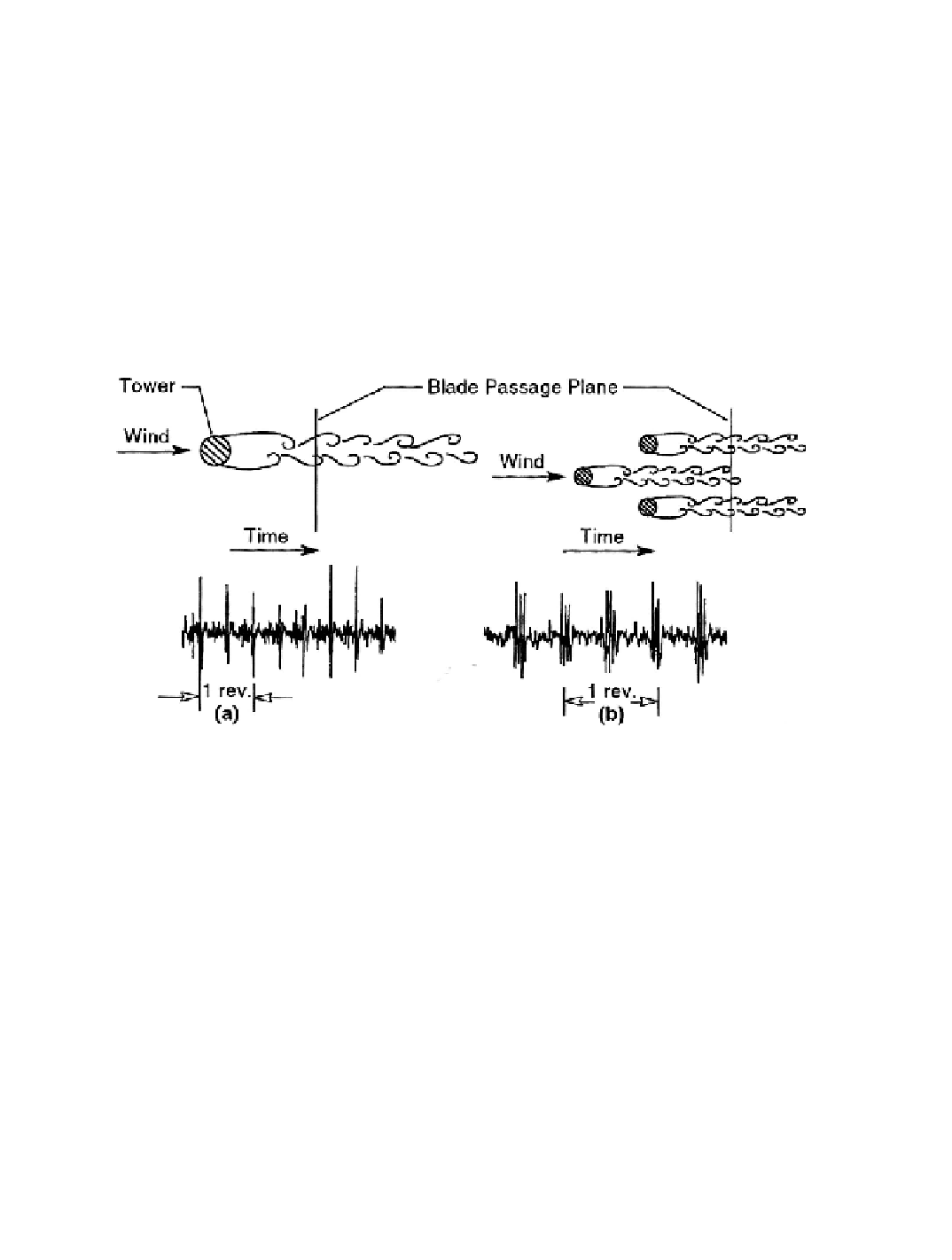Environmental Engineering Reference
In-Depth Information
Blade Impulsive Noise
Impulsive noise is often associated with downwind rotors on HAWTs; in many cases,
it is the dominant noise component for that configuration. Figures 7-3(a) and (b) show
example sound pressure time histories for two different HAWTs with downwind rotors
[Shepherd, Willshire, and Hubbard 1988; Hubbard and Shepherd 1982]. Figure 7-3(a)
relates to the 4-MW WTS-4 HAWT (Fig. 4-24), with its 78.2-m-diameter rotor supported
downwind of a twelve-sided shell tower. Strong impulses are superposed on less-intense
broadband components. The impulse noise arises from the blade's interaction with the aero-
dynamic wake of the tower. As each blade traverses the tower wake, it experiences short-du-
ration load fluctuations caused by the velocity deficiency in the wake. These load fluctuations
lead directly to the radiated acoustic pulses. The acoustic pulses are all of short duration
and vary in amplitude as a function of time. This variation in amplitude is believed to
result from variations in the blade loadings caused by detailed differences in the time-
varying structure of the aerodynamic wake [Kelley
et al.
1985].
Figure 7-3. Sound pressure time histories from two downwind-rotor HAWTS.
[Shepherd, Willshire, and Hubbard 1988; Hubbard and Shepherd 1982]. (a) 78.2-m-diameter
rotor, 2 blades, 2,050-kW output, 30-rpm rotor speed, 200-m distance (b) 17.6-m-diameter
rotor, 3 blades, 50-kW output, 72-rpm rotor speed, 30.5-m distance
The same phenomena, differing only in detail, are illustrated in Figure 7-3(b). These
data relate to a small-scale turbine with a 17.6-m-diameter rotor supported downwind of a
three-legged open truss tower [Hubbard and Shepherd 1982]. Each blade passage produces
a three-peaked pulse as the blade interacts with the wakes of the three tower legs.
Experimental studies by Hubbard and Shepherd [1982] and Greene [1981] showed that the
character of the wake of a tower element can be altered to various degrees by adding such
modifications as strakes, screens, and vanes. Because some velocity deficiency remains in
the lee of the tower, it is inevitable that such modifications can ameliorate but not eliminate
the impulsive noise components.
Figure 7-4 compares narrow-band spectra for upwind- and downwind-rotor HAWTs,
along with their typical sound pressure time histories. The upwind HAWT is the
NASA/DOE Mod-2 HAWT (Fig. 3-37), 91 m in diameter and operating at a speed of 17.5 rpm.
The downwind HAWT is the WTS-4 HAWT. Note that the upwind-rotor spectrum shows an

Search WWH ::

Custom Search